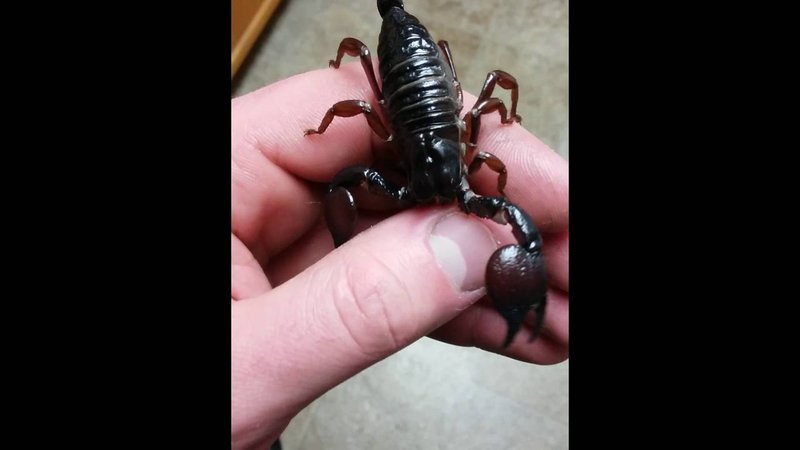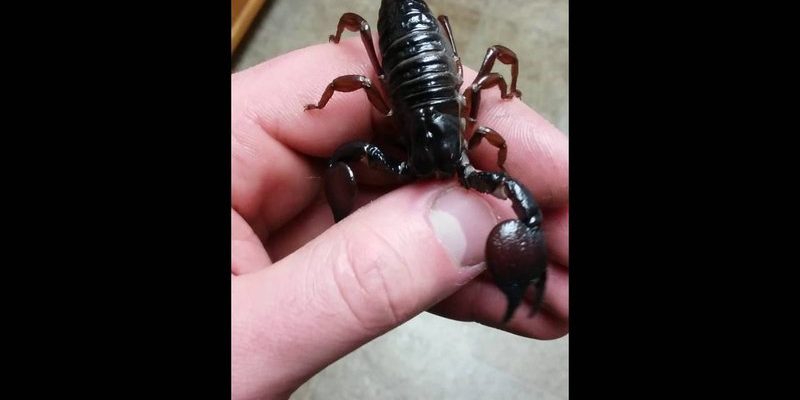
These creatures require proper handling and care to thrive, and their unique nature means that there are some crucial do’s and don’ts to keep in mind. If you’re thinking about getting a red claw scorpion or already have one, let’s wander through the essentials together—sort of like trying to navigate a maze with a flashlight in hand!
Understanding The Red Claw Scorpion
The red claw scorpion, scientifically known as *Urodacus yaschenkoi*, is native to Australia. These scorpions can grow to about four to six inches long, and their bold, red pincers make them quite the sight. Despite their intimidating appearance, they’re generally not aggressive unless provoked. Think of them as the introverts of the arachnid world; they prefer to keep to themselves but will defend their territory if they feel threatened.
In nature, red claw scorpions inhabit arid regions, so their environment is usually hot and dry. This means that if you’re bringing one into your home, you’ll need to mimic those conditions as closely as possible. Providing the right habitat is just as important as how you handle them. Understanding these creatures and their needs is crucial for keeping them happy and healthy.
Do’s for Handling the Red Claw Scorpion
When it comes to handling red claw scorpions, there are some best practices you should definitely follow:
- Do keep your hands clean: Before you handle your scorpion, wash your hands. Scorpions can be sensitive to oils and lotions, and you wouldn’t want to irritate them before playtime.
- Do use a proper container: If you need to move your scorpion, make sure you use a secure container. A small, ventilated box will do the trick. It’s like giving them a safe Uber ride, making sure they don’t go flying out!
- Do offer a hiding spot: When you’re handling the scorpion, it’s smart to have a hiding spot available. A small rock or piece of bark can help them feel secure.
Honestly, handling a scorpion can be nerve-wracking at first. But with practice, you’ll build confidence. Always remember to stay calm. Scorpions can pick up on your energy.
Pay Attention To Their Body Language
Another key aspect of handling these creatures is reading their body language. You might be wondering what that looks like. Here’s the thing: if they’re raising their pincers, that’s a sign they’re feeling defensive. If they’re curling their tail or moving slower than usual, they might be scared.
Understanding their signals can help you know when it’s best to back off or when they’re ready for some gentle interaction. Just like with people, sometimes they need their space!
Don’ts for Handling the Red Claw Scorpion
Now that you know the do’s, let’s explore what you definitely shouldn’t do:
- Don’t try to grab them: It’s tempting to just scoop them up, but that can be dangerous for both you and the scorpion. Instead, let them walk onto your hand naturally.
- Don’t expose them to extreme temperatures: Scorpions thrive in warm environments, but hot and cold extremes can stress them out. Keep their habitat within the recommended temperature range.
- Don’t handle them when they’re shedding: During this time, scorpions are vulnerable. It’s best to leave them alone until they’ve fully molted.
Handling them incorrectly can lead to stress, which could affect their health. And nobody wants a stressed-out scorpion on their hands!
Recognizing Stress Signals
A stressed scorpion might behave differently than usual. They might stay hidden, not move much, or even show aggressive postures. If your scorpion seems off, give it some time and space to relax. Remember, patience is key. It’s all about respect in this relationship.
Creating A Safe Environment
Your red claw scorpion’s habitat plays a big role in its health and well-being. Here are some tips to create a cozy space:
- Use proper substrate: A mix of sand and soil works well for these scorpions. It mimics their natural environment.
- Maintain humidity levels: Scorpions do best with a humidity level around 50% to 70%. A small water dish can help with this.
- Provide hiding spots: Whether it’s a piece of driftwood or a small cave, your scorpion needs places to hide. It’s like giving them their own cozy nook!
The right setup will make your scorpion feel safe, which, in turn, makes handling easier. Always monitor their environment to prevent stress.
Regular Maintenance
Keeping the habitat clean is just as important. Regularly change the substrate and remove uneaten food to prevent mold or bacterial growth. It’s like keeping a tidy room; nobody wants to live in a dump!
When to Seek Help
Sometimes, despite your best efforts, things might not go as planned. If you notice changes in your scorpion’s behavior, you might need to consult a veterinarian experienced with exotic pets. Look out for signs like lethargy, refusal to eat, or unusual twitching.
If your scorpion gets injured, don’t panic; carefully assess the situation. If it’s a small injury, you can often care for it at home. However, if it looks severe or if you’re unsure, seek professional help. It’s like going to the doctor when you’re not feeling well—you want to ensure your little friend gets the best care.
Common Myths About Scorpions
There are several myths surrounding scorpions. For example, many people think they are all deadly. While it’s true that some species are venomous, the red claw scorpion isn’t particularly dangerous to humans. They’re more likely to pinch than to sting if handled gently. Understanding the truth about them can help ease your mind as you care for your pet.
Final Thoughts on Safe Handling
Handling the red claw scorpion can be rewarding, but it requires patience, respect, and knowledge. By following the do’s and don’ts and creating a comfortable environment, you’ll build a trusting relationship with your scorpion. And remember, every interaction is a chance to learn. Just take it slow, listen to their cues, and soon, you’ll be a pro at handling your little pincered friend!
In the end, having a red claw scorpion is like being part of a special club. It requires responsibility, but the rewards of seeing your scorpion thrive are worth it. So, embrace the journey, stay curious, and enjoy your time with your prickly buddy!

